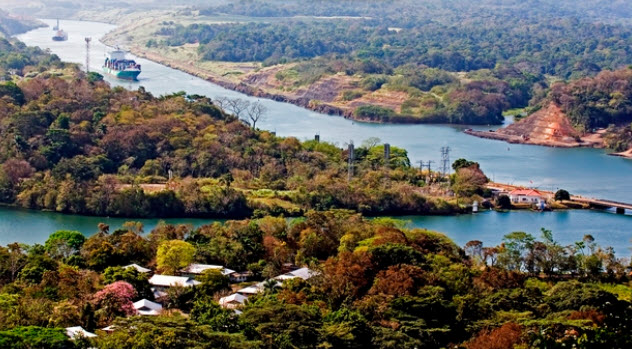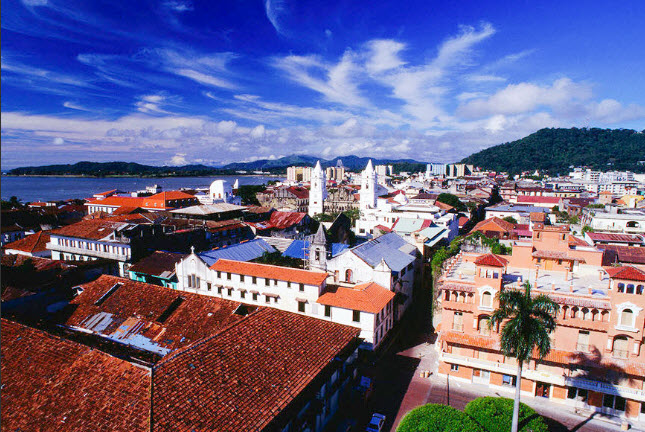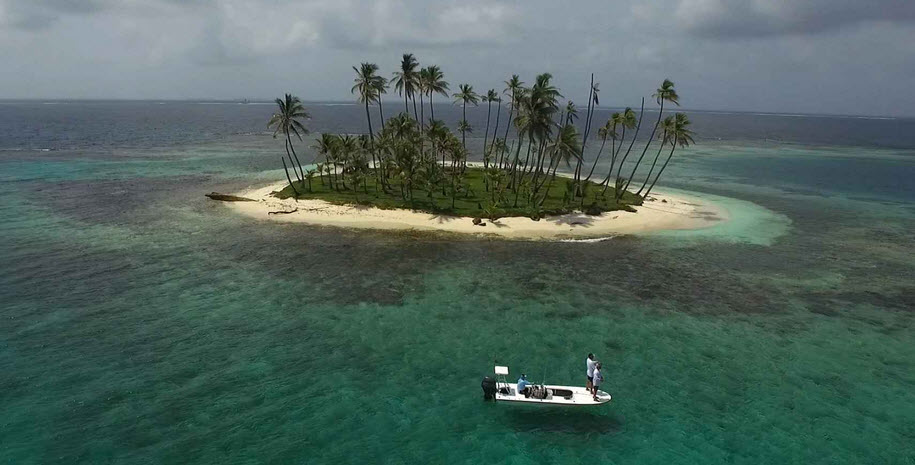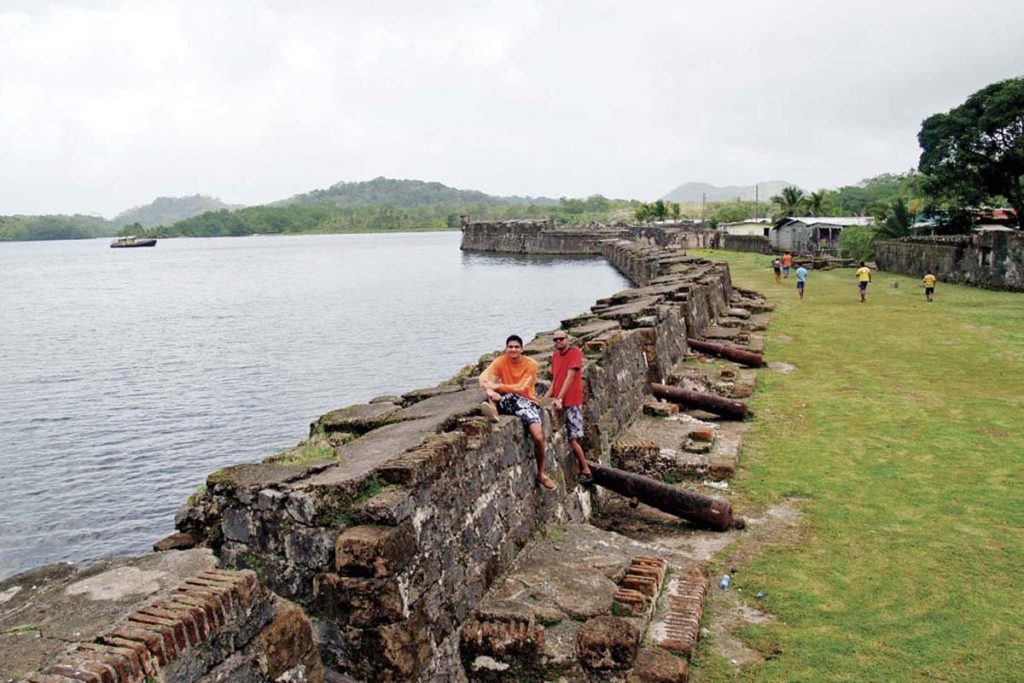In Britain, Panama is famous for two things: the canal and canoe man. Back in 2002, John Darwin faked his own death and fled to Panama City with his wife, who, following his “canoeing accident”, claimed £1m in insurance and pension pay outs. Had a newspaper not got hold of a picture of him looking tanned, happy and alive in 2007, the plan would have worked. If you’re from Hartlepool and you want to disappear, there can’t be many options better than Panama. Not only is it sunny and cheap, there’s also barely a Brit in sight.
But this is set to change as European companies look to take advantage of Panama’s burgeoning tourism industry. Although it has officially been independent since 1903, Panamanians are fond of saying they’re nationhood only truly commenced in 1999 when the Americans completely relinquished control of the Panama Canal. This was the first year the country had free and fair elections and since then its economy has gone from strength to strength. Fifteen years ago there were fewer than 1,500 hotel rooms in the whole of Panama. Now there are almost 20,000 with the Bristol, Trump, Hard Rock and many others all moving in in the last couple of years.
Since 2008, while the rest of the world waded through a global recession, the Panamanian economy expanded by 50 per cent. Metro de Panama, Central America’s first subway, was also completed at a cost of $2bn. Basically, Panama is doing great right now and European holiday companies are starting to take note: Air France, who I flew with, have just opened a new route from Paris to Panama.
Hotel rooms, highways and tourist-ready beaches can bring money into a city, but they can’t give it a soul. Like most tax-havens, Panama (on the surface at least) has a bland, expensive sheen; an unloved and unlived-in quality which separates it from other, fierier Latin American nations. Perhaps it’s telling that the thing for which Panama is most well-known is also the means by which people pass right through. But beyond the giant watery toll booth and the shiny, underpopulated skyscrapers of the capital, I found there’s plenty of reason to stick around.
THE CANAL
You can’t go to Panama and not visit the 77 km man-made stretch of water connecting the Atlantic to the Pacific. When I went, the $5.25bn expansion, set to double the canal’s capacity, had hit the buffers, with the Spanish company in charge of the project reportedly running out of money. As a result, much of it looked like a vast building site, but it was still a sight to behold: colossal container ships line up to enter and exit through three giant locks. The first attempt to build the canal was undertaken by the French but disease and accident claimed the lives of an estimated 22,000 men before the project was abandoned and left for the US to complete in 1914. The Americans remained in control until the end of the 20th century. Since being handed the reigns in 1999 Panama hasn’t been afraid to flex its muscles. Fees for ships passing through have tripled in the past five years to around $450,000 for a vessel containing 4,500 containers. My guide told me that when it comes to the running of the canal, the government’s message is simple: “The customer is always wrong.” If you don’t like it, you’re welcome to take the 5,000 mile trip around the tip of South America.
CASCO VIEJO
The monumental industrialism of the canal feels a million miles from the tree-lined streets and ornate architecture of Panama City’s Historical Quarter. The Casco Viejo (old quarter in Spanish) was founded in the early sixteenth century by the Spanish, who used the city as a base to launch their South American conquests. Pirate Henry Morgan (of spiced rum fame) ransacked and burned the city in 1671, leaving only the skeletal remains of the original buildings intact. Unperturbed, the Spanish rebuilt the city two years later – this time with a wall. Over the years other colonists added to it, resulting in a beguiling, utterly unique mix of Spanish, French and Caribbean architecture which was awarded UNESCO World Heritage Site status in 2003. The film industry has also taken note: the main square was used as a stand in for La Paz in Daniel Craig’s Quantum of Solace. In the daytime, echoey alleyways and shaded squares make the perfect place to stop for an ice cold Bilbao. At night, rooftop bars keep locals and expats breezily content with cocktails and house music until the small hours.
SAN BLAS
With all the talk of links between oceans, it’s easy to forget that Panama’s Atlantic coastline is actually part of the Caribbean. The archipelago of San Blas is a gleaming emerald in Panama’s tropical coastline. The indigenous Kuna tribe populate the islands and provide access to the archipelago in exchange for a fee negotiated at various toll booths in the jungle road leading to the beach (Kunas are allowed to impose their own taxes because they receive no help from the government). Yes, getting there can be complex – we had to get up at four in the morning following intense reasoning with the Kuna drivers – but it’s worth it: 365 islands, all perfectly proportioned with two, three, sometimes several palm trees providing just enough shade from the burning sun. The turquoise water is perfect for snorkelling. And if you don’t want to get wet, you can watch as crabs scuttle across the sand.
PORTOBELO’S CONGO CARNIVAL
Of the many tribal and religious rituals I witnessed in Panama – as well as the Kunas we were also introduced to the Embera community in the jungle of El Darién – the most striking by far took place in Portobelo. The eerie, rundown port city full of caged animals and garish murals is of particular importance to some minority Christian sects because of its church devoted to the Black Jesus. Winding through the narrow streets toward my minibus, I opened upon the Congo Carnival in the village square. Inebriated men in devil masks danced up to youngsters who would take turns to whip them painfully across the legs – sometimes drawing blood – to the sound of hypnotically beating drums. This was about as far from the sanitised impersonality of the capital’s financial district as it is possible to get.
I suspect the allure of Panama lies in the balance between the two: comfortable corporate living with a dash of earthy latin culture. And plenty of surprises in the wilderness.
Stay Safe!!




